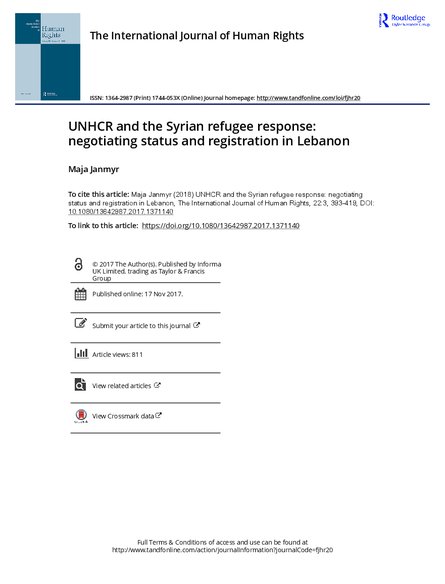
When a host state rejects the international refugee law regime, yet faces an unprecedented number of refugees, how does the United Nations High Commissioner for Refugees (UNHCR) execute its mandate to provide international protection to these refugees? This paper seeks to attend to this pertinent issue by focusing on the role and practice of UNHCR in the context of the large-scale Syrian influx to Lebanon. This country insists that it is not a country of asylum, and flatly rejects ratification of the 1951 Convention on the Status of Refugees and its 1967 Protocol. In proportion to both its geographical and population size, however, Lebanon hosts the highest number of refugees in the world. This paper argues that Lebanon’s recent policies aiming to decrease the number of Syrians in the country, by reducing access to territory and encouraging return to Syria, have heavily affected UNHCR’s own ability to execute its international protection mandate. The article seeks to explore this issue further by, on the one hand, examining UNHCR’s policies to recognise Syrians in Lebanon as refugees under international law, and, on the other, exploring its practice when it comes to registration of Syrian refugees, and the meaning of these practices for refugee protection in Lebanon.
Resource collections
- UN Habitat - Urban Response Collection
- Urban Response - Urban Crisis Preparedness and Risk Reduction
- Urban Response Collection - Community Engagement and Social Cohesion
- Urban Response Collection - Economic Recovery
- Urban Response Collection - Environment and Climate Change
- Urban Response Collection - Housing, Land and Property
- Urban Response Collection - Urban Crisis Response, Recovery and Reconstruction
- Urban Response Collection - Urban Resilience
